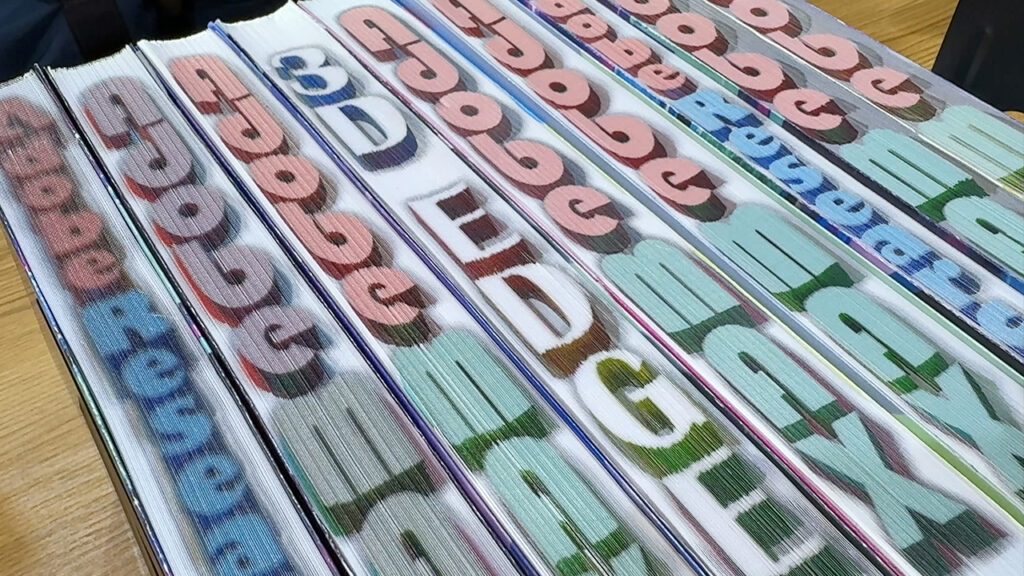
Ever wonder how Adobe’s researchers know what artists really want from their tools? One answer is Daichi Ito. Ito is a Technical Research Artist for Adobe Research, and his job is to help find the sweet spot between innovation, real-world practicality, and delight as the team develops new tech for creative professionals. You can think of Ito as Adobe Research’s customer zero.
Ito is one of the creative forces behind Adobe Research projects, including watercolor, oil painting, and flame effects; VR design; and brand new technology for 3D Edge Printing. Many of his efforts have directly or indirectly contributed to groundbreaking features in Adobe tools, including Photoshop and Adobe Fresco.
From artist to researcher
Ito first met with the Adobe Research team twelve years ago, when they were searching for a full-time artist-collaborator with an understanding of technology. “Adobe was one of my favorite companies and these were my favorite tools, so I was very excited about the possibilities,” says Ito.
Ito was deeply familiar with Adobe products because, back in college, he’d chosen art over technology (another passion). From there, he’d gone on to work for game companies and publishers, making a career on small teams where he could fill lots of roles, from designing concept art to 3D modeling, flash animation, and more. So he knew exactly what it’s like to be a creative professional with a lot on your plate, and he’d seen how tools and workflows shape an artist’s days.
Ito was also the kind of artist who always traveled with a sketchbook, pencils, and paints in his bag—and he’d spent time daydreaming about how digital tools could become as enjoyable as his tried-and-true analog ones.

Getting messy to get it right
When Ito joined Adobe Research, one of his first projects was to provide feedback on new tools designed to simulate real-world art mediums, including paint on paper.
“From an artist’s perspective, I could see right away that the digital watercolor and oil paints the team had developed needed to flow differently,” remembers Ito. “The researchers had created some impressive and sophisticated liquid simulation technology, but they still needed more hands-on experience. For example, they had the idea that artists usually use very thick oil paint, like you’d see with Van Gogh. But most artists prefer thinner paint with a different kind of flow.” Ito also helped the team think differently about color mixing and brush stroke simulations.
It was a hands-on, get-messy kind of process. Ito brought watercolors, oil paints, pencils, and paper into the office to show the team an artist’s perspective, and they experimented together with things like changing the ratios of water and pigment. And they studied the complex ways that paint interacts with paper.

This work helped shape tools like Adobe Fresco. “Today, I think the digital versions of painting and drawing are really good. With the advantage of digital tools, it’s sometimes an even better drawing or painting experience than paper. Now when I’m going out, I usually bring an iPad and use Fresco—not because it’s an Adobe product, but because it’s the best of the best,” says Ito.
Digging into fully digital experiences
These days, much of Ito’s work is focused on projects that are farther from the analog world. He’s helped advance work in video, 3D modeling, and VR painting. Ito takes time to play with the early prototypes, channeling his experience as a creative professional.
“When I need more expertise, I reach out to my former colleagues in design firms and game companies to get their insights as well,” he explains.
One of Ito’s favorite Adobe technologies at the moment is Substance 3D Modeler, which allows users to sketch in the air. “It’s so intuitive. With other tools, 3D modeling requires many steps. Now you can make a 3D sketch using a headset. It’s fun, but it’s also very practical. You can export your artwork as a 3D mesh file, which means you can create things like game characters, or make physical objects using a 3D printer.”
Another of Ito’s recent projects is 3D Edge Printing. The idea dates to the 10th century, when artists first began creating elaborate, sometimes secret, designs on the edges of books. Some of these designs, known as fore-edge paintings, can be seen by looking at a book’s edges directly, while others are only revealed when a reader fans the pages slightly.
“Our Head of Adobe Research, Gavin Miller, asked me to think about what we could do with this old technique,” remembers Ito. So Ito grabbed some of his sketch books and began exploring ways to create interesting effects by painting the edges of his pages. Since then, the team has developed a new tool—still in its early stages—that allows users to create fun 3D effects on book edges.

Becoming the voice of Adobe Research at Adobe MAX Japan
In addition to helping shape products, Ito is the voice of Adobe Research each year at Adobe MAX Japan. The event usually happens a month after MAX in the US, so Ito works with researchers to update their sneak peek demos so that they’ll resonate with a Japanese audience. “For example, this year for Project Neo, they showed the tool creating a basketball court and a school in the US. For the Japanese audience, I thought of a traditional Japanese tea house—and an artist from the team made it for me in just a few hours. The Japanese audience loved it.”
Project Primrose, the dynamic digital dress, also made an appearance at Adobe MAX Japan this year—and it was the first time that the researchers who built a technology presented it live at the event. “I didn’t want to wear the dress,” chuckles Ito. “So I pushed to invite the inventors to Japan. They created new animations for the dress, and I wrote a simple script so we could all talk together in Japanese.
Imagining the future of creative tools
While Ito can’t reveal anything about the tools he’s helping to create right now, he can share some of his visions for the future. “Years from now, I want to see a speaker that generates scent, or maybe a screen that changes its texture or material, so that when you touch it, it might feel rough, or sticky. As technology advances, there are so many things we can imagine.”
Wondering what else is happening inside Adobe Research? Check out our latest news here.